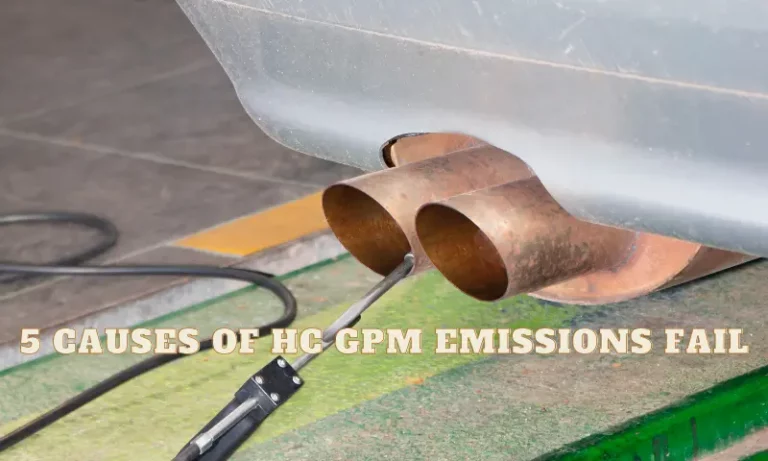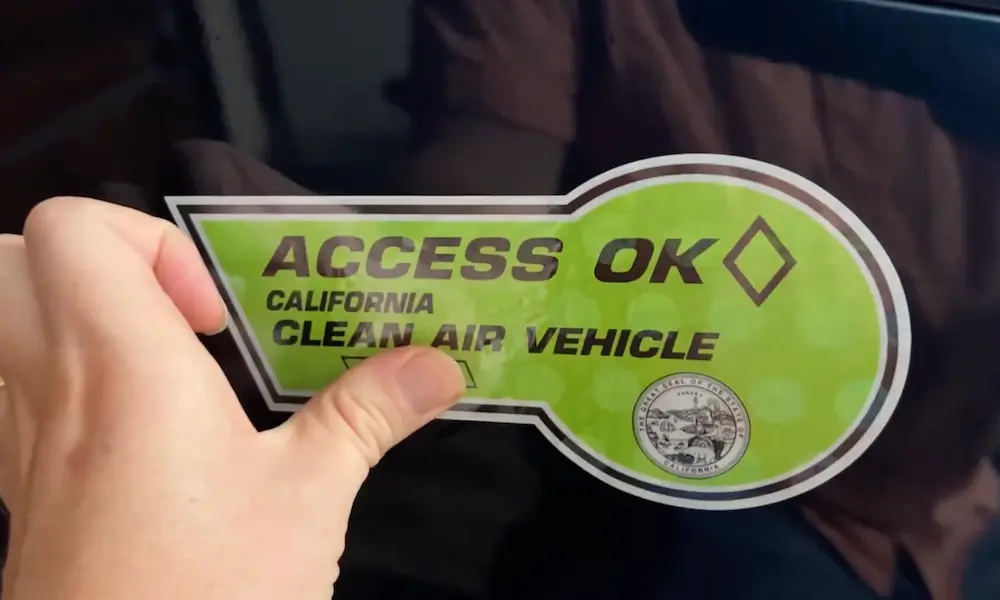One major cause of a failed emission test is the presence of high hydrocarbons in a vehicle’s exhaust fumes. When the test is carried out, the amount of HC found is more than the required for a state; then, you will have an HC GPM Emissions Fail.
Higher hydrocarbon in the fuel emission of a vehicle is mostly caused by sunburn fuel, which escapes to the exhaust system. This could be because the air-fuel mixture, low cylinder compression, and more are inaccurate. Once the fuel reaches the exhaust system, it creates higher hydrocarbon in the exhaust fumes.
Here, we will look at the meaning of HC GPM Emission failure, its causes, and how it could be solved.
What is HC GPM Emissions Fail?
HC GPM shows high carbon release from the car, which is a leading cause of a failed emission test. This usually comes up after a smog test and shows that the vehicle failed it.
What is a smog test? This checks your vehicle’s emissions and ensures the gas waste it releases is within the state’s legal limit. The test includes two major inspections: the OBD test and exhaust gas analysis.
During the OBD test, a tool connects the vehicle’s computer system, which then checks for issues with the car by scanning for trouble codes.
On the other hand, exhaust gas analysis involves measuring the gases released by the combustion engine. The device used will measure the following.
- Carbon monoxide (CO)
- Oxygen (O2)
- Nitrogen dioxide (NO2)
- Hydrocarbons(HC)
- Carbon dioxide
- Nitric oxide (NO)
During The exhaust analysis, if the hydrocarbon turns out to be high, you have an HC GPM emission failure.
The HC stands for hydrocarbon, while GPM stands for Grams Per Mile, the standard for vehicle emission.
Causes of HC GPM Emissions Fail
It could be hard to pinpoint the cause of HC GPM Emission failure. However, any factor that leads to more unburnt fuel levels in the engine into the exhaust will cause higher hydrocarbon.
Below are the causes of HC GPM Emission failure.
1. Improper Fuel Mixture
An improper air-fuel mixture is one Major cause of increased hydrocarbon in the exhaust fumes. The issue will come when the engine is running lean or rich.
When the air mixture is more than the fuel in the combustion system, then we can say that the engine is running lean. When the unmetered air finds its way into the intake, it affects the quality of combustion; this allows more unburnt fuel to escape to the exhaust system. This will create higher carbon.
On the other hand, when more fuel than air goes into the engine system, we can say the engine is running rich. As more fuel goes to the system, not all will be burnt, which will escape into the exhaust, causing more HC to be created.
The rich and lean issues cause engine misfire, which is a leading cause of the creation of hydrocarbons in the exhaust system.
2. Failing catalytic converter
Another cause of high hydrocarbon in the vehicle is a failing catalytic converter. This device is responsible for reducing the harmful substances in the exhaust gas, including hydrocarbons. It cannot perform this function when damaged, leading to the HC GPM emission failure.
3. Ignition problem
When the ignition process is not done properly, more unburnt fuel will escape the engine, which will cause a misfire. The gas finds its way to the exhaust system, where it will be burned, leading to more HC in the gases when they finally get out from the exhaust system.
4. Damaged air injector
The air injector system (AIS) is part of the emission system, and it forces air into the engine’s exhaust ports. This can reduce HC and CO in the gases released when this happens. As The oxygen enters the system through the AIS, it ensures that unburnt fuel keeps burning.
5. Low cylinder compression
Cylinder compression is the pressure generated while the air fuel is burnt while the vehicle works. Once this pressure is low, it will lead to more unburnt fuel leaving the engine. What this will cause is more HC in the emissions.
How to Fix HC GPM Emissions Fail?
The first step to fixing an “HC GPM Emission failure” is to figure out the source of the problem. To do this, you need to recognize all the components that could cause the issue and have them examined.
Below is how you can fix a “HC GPM Emission Fail.”
1. Solve improper fuel mixture problem issue
It could be tricky to solve an improper air-fuel mixture because numerous factors could cause this issue. Some may include clogged air, fuel pressure issues, bad O2, and mass airflow sensors.
You can use a scan tool to properly diagnose air-fuel mixture issues. This will be able to pinpoint the source of the problem.
Once the fuel issue’s exact cause is determined, an appropriate fix can be executed. If the cause is a clogged air filter, the filter should be replaced. Bad oxygen sensors should also be replaced.
2. Fix failing catalytic converter
A failed catalytic converter could result from accumulated dirt and can be easily solved by unclogging the component. To do this, follow the steps below.
- Get a reliable catalytic converter cleaning agent.
- Add the cleaner to your fuel tank when it is ¼ full.
- Drive the vehicle for about 20 minutes.
- Go ahead and remove the catalytic converter and pressure wash and degrease the part.
- Drive the vehicle again for another 15 minutes, and ensure you reach a speed of 2,500 to 3,000 RPMs.
3. Solve ignition problem
Several issues could also cause the ignition issue. These factors may include damaged ignition coils, spark plugs, short circuits, etc. The first step is to find out the cause of the issue.
If the cause of the issue is worn-out spark plugs, replace them. Also, replace other damaged parts that could be traced to the ignition issue.
4. Fix the damaged air injector
Most of the time, a damaged air injector could be caused by dirt, and you may just need to have it cleaned. The injector can be found near the engine and should be cleaned with solvent and compressed air.
A professional mechanic should fix other major damages to the part to avoid further damage.
5. Fix low cylinder compression
This is a major engine fix, and we advise that it be done by an expert except you have the right mechanical knowledge and tools. The repair requires power tools, and any mistake could further damage the engine.
Final Thought!
You must know that as long as your vehicle emissions contain high HC, it will not pass the smog test and will be considered not roadworthy. You could easily diagnose vehicle emissions issues with a scan tool. Get the trouble codes and have all of them fixed. You could have a professional look into your vehicle’s emission problem for a better and faster fix.
















